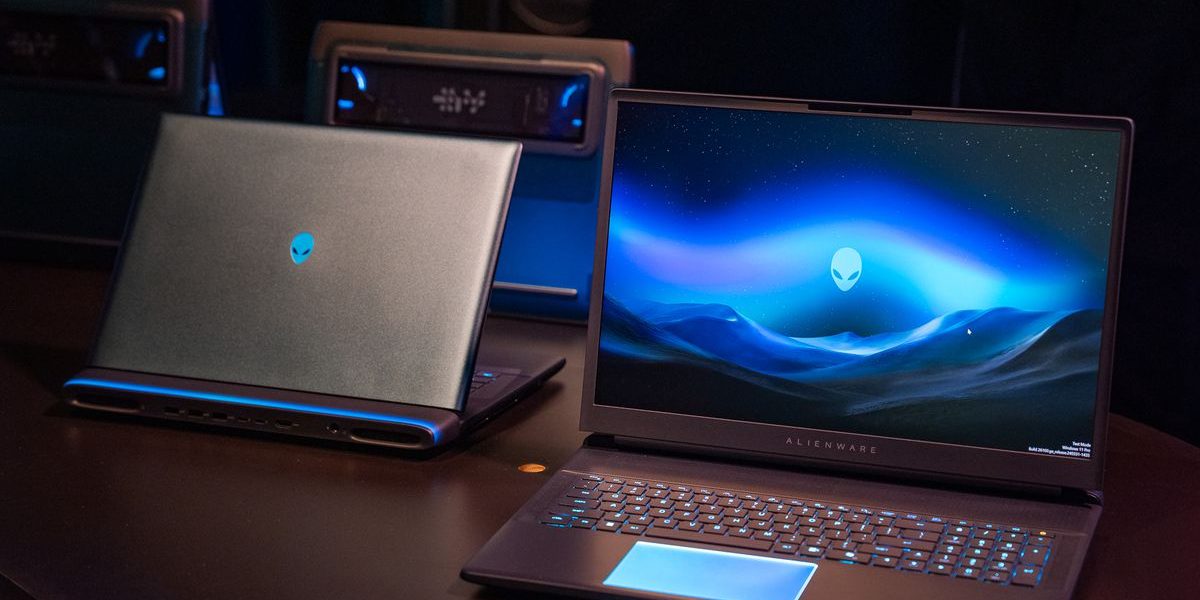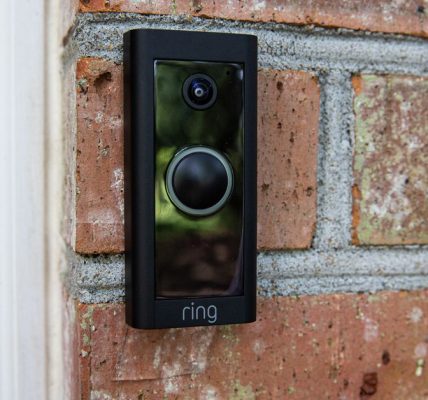The Area-51 Duo: Weights, Processors, GPUs, LEDs, Gaming, and the High-Energy Sides of Laptops
The Area-51 duo use a new thermal architecture to keep all this hot hardware cool, and Alienware claims it moves up to 37 percent more airflow while running 15 percent quieter than the older Alienware X16 R2 from 2024. All those specs and improved thermals sound nice on paper, but keep in mind, these new Area-51 models are hefty laptops. Remember the X16 R2 laptop that Alienware compares? The X16 R2 is six pounds. At 7.6 pounds, the new 16-inch Area-51 weighs about as much as the average American newborn baby, and the 18-inch is even heavier at nearly 10 pounds.
The Area-51 duo will rely on their RGB lighting for their splashiest pops of color, as both sizes of Alienware laptops come in just one chassis color, called liquid teal. The anodized finish is said to take inspiration from the aurora borealis, looking nearly charcoal black in a dimly lit room until its lid or underside shows a slight shimmer of iridescence when the light catches it.
Housed within that aluminum chassis, the Area-51 sports some high-end specs. It can be outfitted with up to an Intel Core Ultra 9 275HX CPU, Nvidia’s new 50-series GPUs, up to 64GB of dual-channel DDR5 RAM, and up to 2TB NVMe PCIe Gen5 SSD. The batteries in the laptops are large at 96Wh. Alienware doesn’t list any battery life estimates in the Area-51’s tech specs. We’ve asked how many hours of use people should expect when unplugged and haven’t yet heard back.
The big drawback here is that the displays also feel a little retro, since the laptops use older IPS display tech. Both machines have 2560 x 1600 QHD panels with 3ms response time and up to 300Hz refresh (240Hz on the 16-inch), but there’s no fancy tandem OLED or anything of the sort like Alienware’s parent company Dell put in its upcoming Pro Premium laptop. If you want OLED displays from Alienware, you’ll instead have to check out its gaming monitors — of which, it announced a new 27-inch 4K QD-OLED at CES 2025 as well as some Area-51 and Aurora prebuilt desktops.
Alienware has built some of the easiest to open toolless gaming PCs around, but for years the brand has stifled their upgrade potential by limiting them to Dell’s own proprietary power supplies and motherboards.
Even though it features a fancy compartment for liquid cooling and power supplies, it is not a hexagonal monster or even a proprietary tower; it is just a standard power supply and fan mounting locations. And even though there’s a dedicated daughterboard to easily control and cable manage its lighting, fans, I/O, and power switch, Dell will offer a conversion kit to make it work with third-party motherboards.
At the Consumer Electronics Show in Las Vegas, the Alienware Area 51 is finally ditching the proprietary parts for standard ATX components.
This is far from Dell’s only shift in strategy this year in an attempt to become more consumer-friendly: it’s also killing off the XPS brand for Apple-like “Pro” and “Pro Max” product lines instead, and those Pro laptops will now all feature consumer-replaceable USB-C ports in addition to user-replaceable batteries.
For many years, the power supply unit was taken to drive commonality between the Dell Precision and Alienware products. Dell got better prices that way — and, he argues, more efficient, higher-quality power supplies, too, by unifying its supply chain and taking advantage of those economies of scale.
Dell needs to see the ratio of price, size, and quality of its products to see whether a new Aurora could compete.
So, does that mean the Alienware Aurora, the smaller and less expensive desktop that Dell is more likely to sell in volume, will get the ATX treatment, too? He is not promising anything now, but he is evaluating that for Aurora as well. He says that we need to hit an inflection point where we apply resources to go and redesign internals.
Why now? I asked McGowan, and his primary answer is that he’s listening to his customers. He tells The Verge that he is talking to customers and reading reviews, and that he hears demand for “standard mounting locations”, which is why Alienware made a ” loud” announcement about it.
Alienware’s promise to do this on every PC is not the only reason to go proprietary. In fact, Alienware built its own nonproprietary ATX motherboard for this Alienware Area-51, and the new 2025 version of its smaller Aurora (a spec bump with new Nvidia and Intel chips) will still feature proprietary motherboards and power supplies, at least for now.
He says it gave Dell the ability to shrink the sizes of its PC cases at a time when its commercial customers were especially interested in a “form factor aggressive” system.




